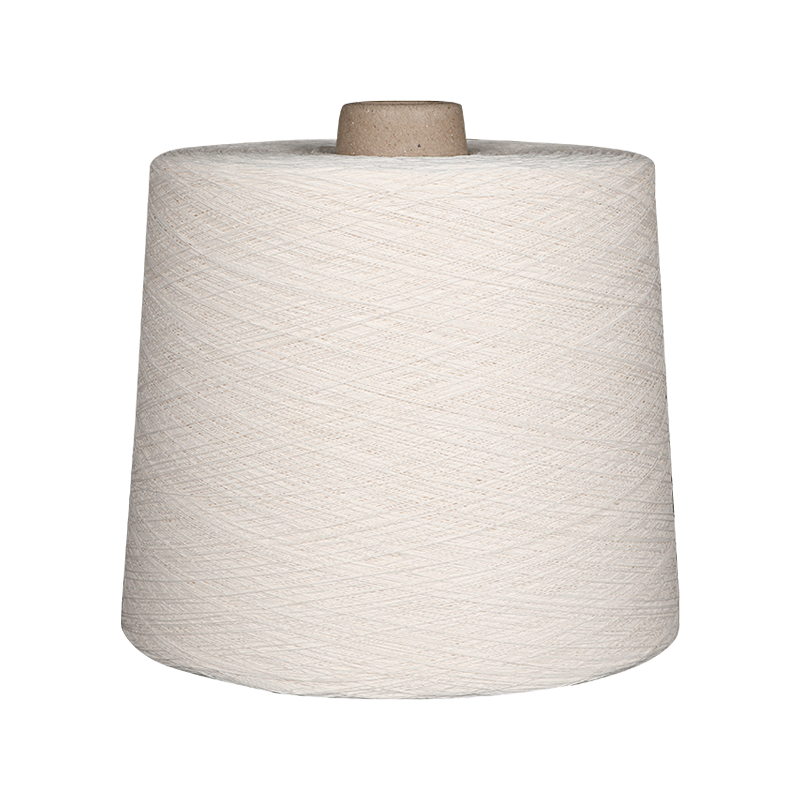The control of temperature and humidity in the storage environment of paper yarn, a crucial industrial raw material, has a direct and profound impact on its quality. Improper temperature and humidity management during storage can lead to a decline in the performance of paper yarn, affecting subsequent processing and usage. Therefore, manufacturers and distributors of paper yarn must place great emphasis on controlling the storage environment's temperature and humidity and adopt scientific management measures to ensure that the paper yarn maintains good performance during storage.
Paper yarn is extremely sensitive to environmental temperature and humidity. Changes in temperature and humidity can cause significant variations in the physical properties of paper yarn, thereby affecting its usability.
The impact of humidity is particularly notable. Paper yarn easily absorbs or loses moisture. In high-humidity environments, paper yarn will absorb moisture from the air, causing the fibers to swell and the edges to wrinkle or loosen. This phenomenon can lead to issues such as misalignment and wrinkling during printing and processing. Conversely, in low-humidity environments, paper yarn will lose moisture, becoming dry and brittle, which may result in breakage or powdering during processing. The ideal storage humidity should be maintained between 50% and 65%, which can ensure the stability of the paper yarn's fiber structure and reduce the risk of deformation and damage.
Temperature also significantly affects the quality of paper yarn. Excessively high storage temperatures can cause the cellulose in the paper yarn to degrade, significantly reducing its strength and making the paper yarn brittle, unable to withstand the mechanical stress of processing. High temperatures can also accelerate the aging of paper yarn, shortening its lifespan. On the other hand, excessively low temperatures can make the paper yarn hard and lose its flexibility, increasing the difficulty of processing. The suitable storage temperature should be maintained between 15°C and 25°C to ensure the paper yarn remains in optimal condition in a moderately warm environment.
To effectively control the temperature and humidity in the storage environment of paper yarn, a series of scientific and reasonable management measures are required. The warehouse storing the paper yarn should have good thermal insulation properties to avoid the influence of external temperature and humidity changes on the indoor environment. Measures such as double walls and insulation materials should be used to reduce temperature fluctuations and ensure relative stability of indoor temperature. A ventilation system should be set up to ensure air circulation and effectively regulate indoor humidity.

Install temperature and humidity monitoring equipment in the warehouse to monitor environmental changes in real time. Use high-precision temperature and humidity sensors to ensure the accuracy and reliability of the data. Regularly record and analyze temperature and humidity data to promptly detect and address any anomalies.
During low-humidity seasons, use humidifiers to adjust the air humidity to prevent the paper yarn from becoming too dry. During high-humidity seasons, use dehumidifiers or air conditioning equipment to reduce air humidity and prevent the paper yarn from absorbing moisture. Adjust the operation status of humidification and dehumidification equipment flexibly according to environmental changes to keep humidity within the appropriate range.
Use air conditioning or temperature control equipment to regulate the temperature inside the warehouse, preventing excessively high or low temperatures. During high-temperature seasons, enhance ventilation and cooling, using refrigeration equipment if necessary. During low-temperature seasons, use heating equipment to keep the indoor environment warm.
The warehouse should avoid direct sunlight. Use curtains or sunshades to prevent the paper yarn from being exposed to sunlight. Sun exposure can cause the paper yarn to fade and turn yellow, and its internal moisture to evaporate, making the paper yarn brittle and deformed.
Regularly check the operational status of temperature and humidity control equipment to ensure it is working properly. Repair or replace faulty or abnormal equipment promptly to avoid temperature and humidity loss of control. Conduct regular maintenance of the warehouse environment to keep it clean and prevent dust and impurities from affecting the quality of the paper yarn.
Temperature and humidity control in the storage of paper yarn is crucial to its quality. Through scientific management of temperature and humidity and effective protective measures, companies can ensure that paper yarn maintains optimal performance during storage, avoiding quality issues and losses due to improper environmental conditions. Manufacturers and distributors of paper yarn should prioritize storage management, adopting a series of effective measures to ensure the quality of paper yarn and smooth subsequent processing. Only in this way can they gain an advantageous position in the competitive market and improve the economic benefits of the enterprise.